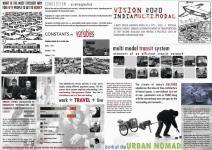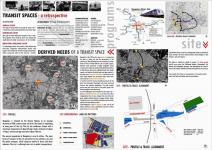Mobility is an essential feature of urban life, for it defines the ability to participate in the modern society. People travel to meet their needs for subsistence, for personal development and for entertainment. Thus, the need for travel is a derived need, because people rarely travel for the sake of travel itself. Cities and means of travel grew together with the shape and extent of cities determined largely by the available transport technology. The modes of transit in a city define the alternatives from which travelers must choose the activities available to them and the places to which they can go. Similarly, they also define the geographic area in which the people function, limiting how far one could travel to work, exchange services or visit friends.
A shift to heavy usage of private transport has resulted in congested metros. To encourage the usage of public transport, we need to integrate the available modes of transport like metro rail, buses, taxis, rickshaws, etc…thus forming a effective urban transit system. Such systems will work best as a part of a comprehensive program for sustainable urban development if considered during early conception of the physical form of the city.
Ex: For a city, Rail Systems become regional connections linked via timed transfers at transit centers with bus and para-transit feeders. Integrated fares complete a seamless multi modal, multi dimensional system serving CBD as well as emerging regional centers.
Sub continental urbanism works on the “principle of inclusivity” where every urban phenomenon is as a part of the comprehensive program. Spatial analysis revealed that markets thrived on urban spaces like transit nodes and given a chance, they would always sneak into the subways that connected to the station. Assimilating such temporal programs into the system to a desired extent would bring chaos & apparent disorder, which is precisely the quality essential to form a symbolic image…. a metaphor for the physical state of a contemporary Indian city.
Through the design ideas proposed at K R market area, I wish to promote the concept of integrating the available modes of transit to form an efficient public transportation, and the assimilation of favorable temporal programs in the surroundings into the nodes of transit interchanges. In an urban context, it symbolizes optimism and a will to survive outside the formal system.
2006
2006
.jpg)
.jpg)



.jpg)

